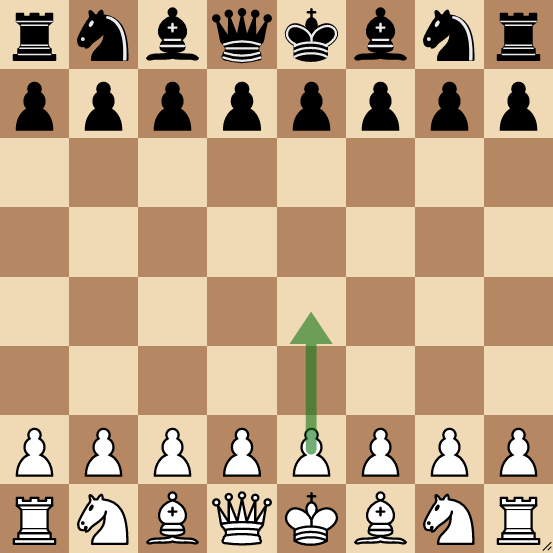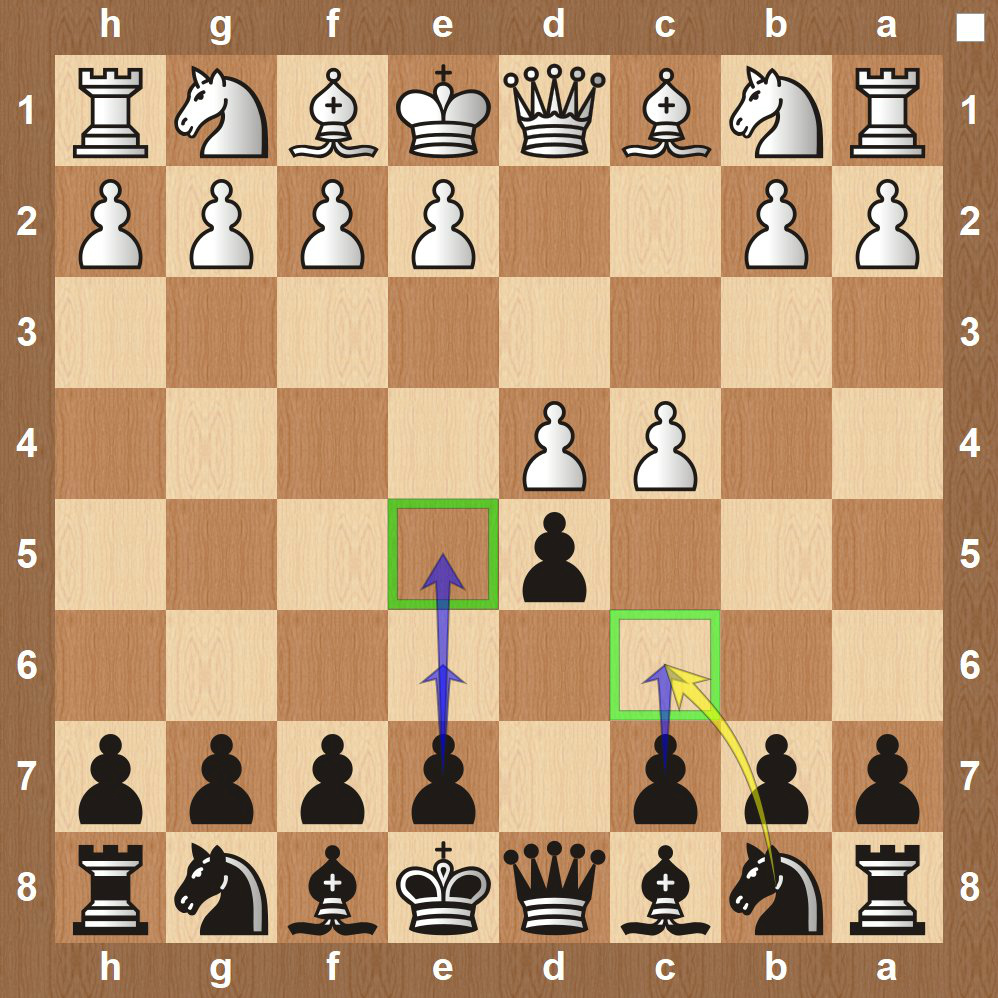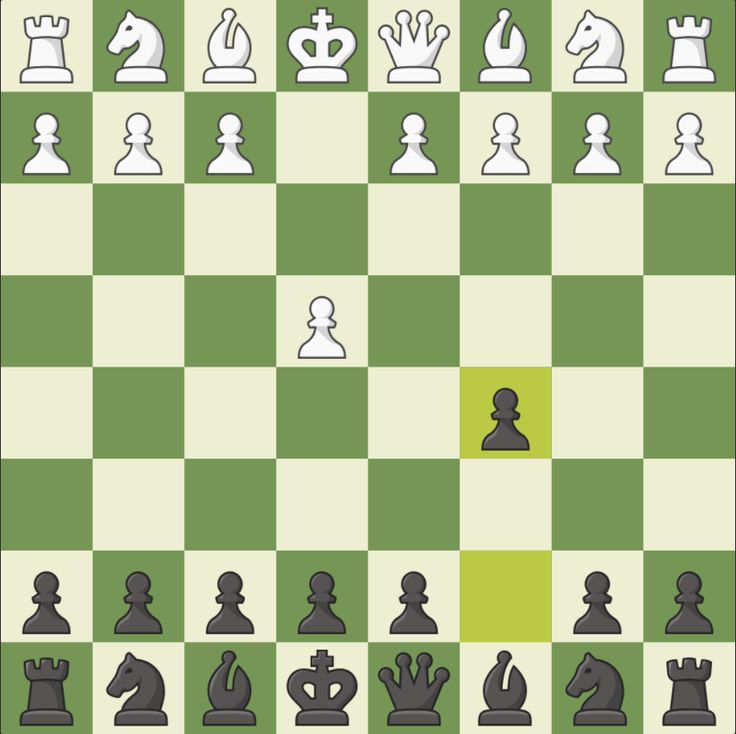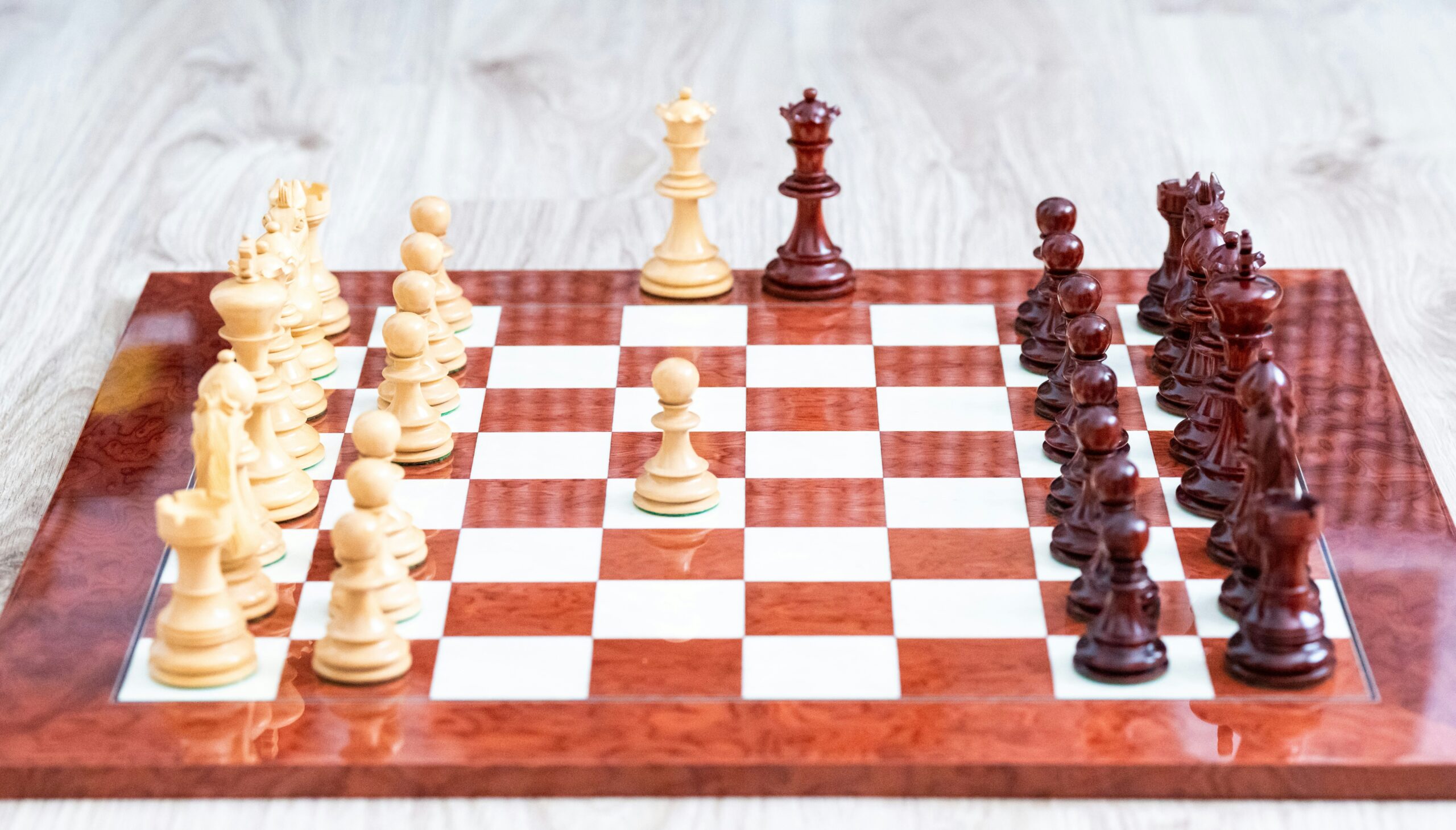Essential Opening Moves Every Chess Player Should Know

Introduction to Chess Openings
Chess openings are critical sequences of moves that set the tone for the game’s overall strategy. They represent the initial phase of a chess match, where players not only develop their pieces but also establish control over the center of the board. The significance of this phase cannot be overstated, as it lays the foundation for the subsequent middle game and even the endgame. A well-executed opening can lead to favorable positions and early tactical advantages, while a poor one may result in vulnerabilities that the opponent can exploit.
Understanding various chess openings is essential for any serious player, whether utilizing a traditional wooden chess set or engaging in a more modern luxury chess variant. There are numerous established openings, each offering unique strategies and opportunities. For instance, the Staunton chess opening is recognized for its flexibility and adaptability, while Soviet chess openings often emphasize solid development and control. Exploring these openings allows players to experiment with different tactics and discover their style of play.
Furthermore, the phase of the game that follows the opening—known as the middle game—can be significantly influenced by the choices made during the opening. Every move in this phase should be deliberate, aiming to either capitalize on the advantages gained or mitigate the risks incurred. Therefore, mastering various opening moves not only enhances a player’s tactical awareness but also fosters a deeper understanding of positional play. As players develop their skills and knowledge regarding wooden chess pieces and boards, they become more adept at anticipating their opponent’s plans and devising their strategies accordingly, showcasing the depth and complexity inherent in chess.

The Italian Game: An Overview
The Italian Game is one of the oldest and most respected opening strategies in chess, known for its effectiveness and versatility. Characterized by the moves e4 e5 Nf3 Nc6 Bc4, it quickly develops pieces while also aiming to control the center of the board. This opening is primarily played by White, who seeks to establish immediate threats to Black’s position, particularly targeting the vulnerable f7 square.
In the Italian Game, players can adopt either aggressive or solid strategies based on their preferences and playing style. Aggressive players often aim for rapid development and immediate tactical opportunities, while more measured approaches may focus on reinforcing control over the center and piece coordination. The Italian Game encourages dynamic play, making it suitable for both novices and experienced chess enthusiasts alike. For those employing luxury chess sets, finely crafted wooden chess pieces enhance the aesthetic quality of these intense battles.
Ultimately, the Italian Game remains a relevant and strategic choice for players today, offering a rich blend of complexity and straightforward tactics. Whether you are engaging in casual matches or competitive play, understanding the principles and strategies behind this classic opening is essential for chess advancement.
Key Strategies in the Italian Game
The Italian Game is a well-respected opening that has graced the boards of both casual players and world-class grandmasters. This opening prioritizes rapid piece development and control of the center, providing players with rich opportunities to create tactical plays and gain an advantage. Central to the Italian Game’s allure is its focus on swift mobilization of pieces, particularly the bishops and knights, ensuring that players are positioned to both defend and attack effectively.
One of the crucial strategic ideas in the Italian Game is the control of the f7 pawn, a frequent target for aggressive maneuvers. In many variations, such as the Giuoco Piano, players exert pressure on this pawn, often with tactical motifs that can lead to devastating attacks. For example, after the opening moves 1.e4 e5 2.Nf3 Nc6 3.Bc4, White sets the stage for quick kingside offenses while simultaneously building a strong presence in the center. Many players favor using beautiful wooden chess pieces in such complex positions to aid in visualizing these strategies.
Moreover, the Italian Game often leads to open positions where tactics abound. A well-known tactical motif is the “Fried Liver Attack,” where White seeks to exploit weaknesses in Black’s position after the moves 1.e4 e5 2.Nf3 Nc6 3.Bc4 Nf6 4.Ng5. This aggressive thrust not only threatens the f7 pawn directly but also opens lines for simultaneous attacks on the exposed king. Additionally, the development of pieces and control of central squares allow for seamless transitions into various other openings, such as the more aggressive Sicilian or the strategic Soviet chess maneuvers, which can catch opponents off guard.
In conclusion, the strategic ideas behind the Italian Game highlight the importance of piece development, central control, and vigilant attention to tactical opportunities. By engaging with these key principles, players can unlock the potential of their wooden chessboards and relish in the thrill of the game.

The Queen’s Gambit: An Introduction
The Queen’s Gambit stands as one of the most renowned openings in the realm of chess, marked by the initial moves 1. d4 d5 2. c4. This strategic maneuver not only aims to control the center but also offers rich opportunities for dynamic play. By advancing the c-pawn, the initiating player seeks to challenge their opponent’s central pawn on d5, thus opening the door to various tactical possibilities.
Within the context of the Queen’s Gambit, two primary variations emerge: the Queen’s Gambit Accepted (QGA) and the Queen’s Gambit Declined (QGD). In the Accepted variation, after the move 2…dxc4, Black chooses to capture the pawn, allowing White to adopt a more aggressive stance. This often leads to an open position which can be advantageous for players adept at handling attacks. Conversely, in the Declined variation, where Black opts to fortify their central position by retaining the pawn, the game can transition into a more solid formation where both sides carefully navigate the complexities of power dynamics on the board.
Historically, the Queen’s Gambit has been a favored choice among numerous chess legends, showcasing its effectiveness across various competitive platforms. Prominent figures like José Raúl Capablanca and Anatoly Karpov have notably employed this opening, capitalizing on its inherent strategic merits to secure victories against formidable opponents. Its resurgence in popular culture, notably through modern media portrayals, has further solidified the Queen’s Gambit as a cornerstone of chess strategy.
Considering its deep theoretical foundations and practical applicability, the Queen’s Gambit remains a vital addition to every serious player’s repertoire, allowing one to engage thoughtfully with the strategic nuances that define the chess game.
Strategic Themes in the Queen’s Gambit
The Queen’s Gambit, renowned as one of the most celebrated openings in chess, unfolds a strategic landscape rich with possibilities. Central to this opening is the control of the center—a crucial aspect of chess strategy that enhances piece mobility and influence over the board. The initial moves 1.d4 d5 2.c4 introduce a challenge to Black’s control of the center, inviting a response that can lead to various pawn structures, including the often-explored variations of the Queen’s Gambit Declined or Accepted.
The significance of pawn structure in the Queen’s Gambit cannot be understated. The pawn on c4, while temporarily sacrificing material, seeks to establish a more favorable pawn formation for White after potential captures. This dynamic leads to significant tactical implications and, if managed successfully, can provide profound positional advantages as the game advances. For instance, if Black accepts the gambit with 2…dxc4, White often aims to recapture the pawn with moves like Qa4+, which not only regains material but also develops the queen actively, creating potential threats against the opponent’s uncastled king.
Coordination of the pieces is another vital strategic theme within the Queen’s Gambit. As the game progresses, the positioning of wooden chess pieces becomes critical. Effective coordination often involves aligning rooks along open files, developing bishops to control long diagonals, and ensuring that knights can find optimal squares. Techniques such as double attacks and pins frequently arise during this opening, illustrating the interplay between piece activity and controlling key areas of the board. Players must remain vigilant to capitalize on their opponent’s mistakes, using tactics that arise from the unique structures and positions generated by the Queen’s Gambit.
Understanding these strategic themes equips players to navigate the complexities of the Queen’s Gambit with greater confidence and skill, fostering not only improved play but also a deeper appreciation for the rich traditions of chess strategy.

The Sicilian Defense: A Dynamic Choice
The Sicilian Defense stands out as one of the most formidable and dynamic openings in chess, commonly initiated by the moves e4 c5. This strategic approach allows Black to immediately challenge White’s control of the center while also presenting various tactical themes that can lead to rich, complex positions. Its popularity among elite players such as Garry Kasparov and Bobby Fischer can be attributed to its potential for counterplay and the myriad of sub-variations available.
Among the most renowned variations of the Sicilian Defense is the Najdorf Variation, recognized for its aggressive posture and flexibility. In this variation, Black plays …a6, which prepares for numerous options, including …e5 or …b5, enhancing piece activity. The Najdorf thrives on dynamic play, often leading to sharp, double-edged positions that can challenge even the most experienced players. Conversely, the Dragon Variation, characterized by the moves …g6 and …Bg7, focuses on hyper-modern strategies, again allowing Black to counterattack effectively. The Dragon’s pawn structure and piece placement create opportunities for tactical skirmishes and are particularly popular among players who relish sharp play.
The Sicilian Defense is esteemed not just for its aggressive nature but also for the countless tactical battles it can generate. Numerous games have showcased its effectiveness; for instance, in the 1956 game between Bobby Fischer and Donald Byrne, the Sicilian Defense led to a stunning victory for Fischer, where he demonstrated breathtaking tactical brilliance. Such games illustrate why the Sicilian remains a preferred choice for those looking to engage in lively tactical battles where both sides are required to think critically and creatively.
In conclusion, the Sicilian Defense offers a multitude of engaging sub-variations, making it a staple for players seeking dynamic and competitive openings in chess. Its flexibility and aggressive characteristics continue to captivate players at all levels, making it a paramount choice in the realm of luxury chess.
Understanding the Sicilian Defense Strategies
The Sicilian Defense stands out as one of the most popular and extensively studied chess openings among players of all levels. Often employed in response to 1.e4, this defense seeks not only to counter White’s initial aggression but also to provide Black with numerous counter-attacking opportunities. The key strategic themes of the Sicilian Defense revolve around pawn structure, piece development, and the dynamics of both open and closed positions. Its flexibility allows players to adapt their strategies based on the evolving board landscape.
One of the core aspects of the Sicilian Defense is the pawn structure it creates. By advancing the c-pawn to c5, Black seeks to undermine the center established by White. This structure leads to complex positions where tactics become paramount, and players can leverage the weaknesses in their opponents’ position. Choosing variations such as the Najdorf or Dragon emphasizes the counterattacking nature of this defense, encouraging aggressive play with pieces like the knight and the queen to put pressure on White’s position.
In addition, the Sicilian Defense produces varied pawn structures that can lead to both open and closed positions. Open positions often favor tactical play, providing ample opportunities for tactics through combinations and threats against the opposing king. Conversely, closed positions require careful maneuvering, focusing on gradual improvement of piece placement. Chess players must adapt their opening moves according to the chosen Sicilian variation to maximize their effectiveness.
Common tactical traps in the Sicilian Defense can catch unprepared opponents off guard. For example, a typical sequence can lead to traps involving sacrifices, where the material gain can be eclipsed by a strong initiative. Understanding these traps enhances a player’s ability to navigate through the Sicilian Defense successfully, making it a formidable choice for anyone eager to explore the depths of chess strategy.
Famous Players and Their Openings
Chess has long been influenced by the styles and preferences of its most renowned players. Throughout history, players like Garry Kasparov, Bobby Fischer, and Magnus Carlsen have showcased unique approaches to the game, particularly in their choice of opening moves. Each of these grandmasters has made significant contributions to chess theory, specifically through their favored strategies and variations.
The Italian Game, a classic opening that emphasizes quick development and control of the center, was famously utilized by Bobby Fischer. Known for his aggressive style, Fischer often employed this opening to exert pressure on his opponents early in the game, leading to rapid and tactical victories. His use of the Italian Game not only manifested his mastery of piece coordination but also showcased how wooden chess pieces could be leveraged for strategic gains.
On the other hand, Garry Kasparov, a player renowned for his deep understanding of chess positions, often opted for the Sicilian Defense. This dynamic opening allows Black to counter-attack and create imbalances, fitting perfectly with Kasparov’s combative style. His games often demonstrated how the Sicilian could disrupt the conventional strategies of opponents, illustrating the practicality of using a wooden chessboard to explore rich and complex positions.
Magnus Carlsen, the reigning World Champion, has a distinct preference for a variety of openings, often switching between classical lines and modern responses. He has effectively utilized the Queen’s Gambit in his games, particularly during high-stakes tournaments. By employing this opening, Carlsen has showcased not only his adaptability but also how the luxury chess pieces on a finely crafted wooden chessboard can be navigated to secure advantageous positions.
These famous players illustrate the profound impact that individual preferences have on opening selections in chess. Their commitment to specific openings not only defines their unique styles but also contributes to the broader understanding of chess strategies in modern gameplay.
Conclusion: Incorporating Openings into Your Play
Mastering essential opening moves is a crucial aspect of developing a successful chess strategy, regardless of whether one plays on a simple wooden chess set or a luxury chess board. The opening phase of the game sets the tone for the middle and end stages, providing players with opportunities to control the board and set tactical advantages. By understanding the significance of openings, such as the Staunton chess formation or variations stemming from Soviet chess traditions, players can enhance their competitive edge significantly.
Incorporating key openings into your play can lead to improved outcomes during matches. Practicing these moves can help engrain them into your memory and enable you to identify the most effective strategies based on your opponents’ responses. Whether you prefer the classic Sicilian Defense or the more aggressive King’s Gambit, adaptable openings can cater to various styles and techniques. Such flexibility in employing different openings can distinguish a proficient player from an inexperienced one.
For those looking to deepen their understanding of the intricacies of opening theory, numerous resources are available. Books dedicated to wooden chess strategy, online tutorials, and chess databases both provide valuable insights. Engaging with online chess software can also help players experiment with various openings in a simulated environment, allowing for risk-free exploration of different approaches. By thoughtfully integrating these openings into your games and continuously seeking improvement, you are well on your way to becoming more proficient at chess.
In conclusion, dedicating time to learn and adapt key opening moves in chess is integral to developing a formidable playing style. As players refine their skills, regularly revisiting openings will yield significant long-term benefits.



